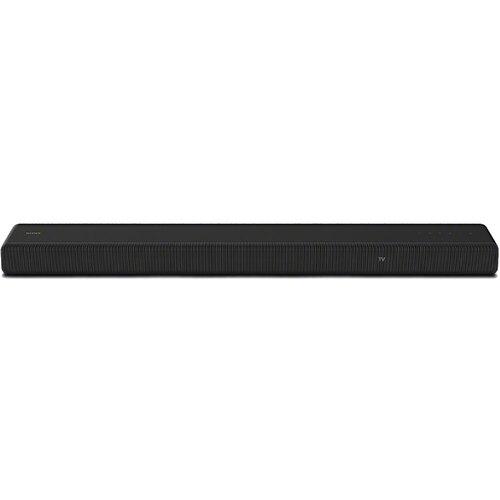
Your TV's built-in speakers probably aren't doing your favorite shows and movies justice. Let's explore two compelling soundbar options that can transform your home entertainment experience, but take quite different approaches to delivering great sound.
The soundbar market has evolved significantly over the past few years. What started as simple stereo upgrades has grown into sophisticated audio systems that can genuinely rival traditional surround sound setups. The key development driving this evolution is Dolby Atmos, which adds height channels to create a truly three-dimensional sound field - imagine hearing a helicopter actually moving overhead in your favorite action movie.
The Sony HT-A3000 ($700) and JBL Bar 1000 ($1,140) represent two distinct philosophies in modern soundbar design. Sony bets on advanced digital processing to create virtual surround sound from fewer speakers, while JBL takes a more traditional approach with physical speakers for each channel.
The Sony HT-A3000 uses a 3.1 channel configuration - that means three front channels (left, center, right) and built-in subwoofers for bass (the ".1"). What makes it special is Sony's Vertical Surround Engine, which uses clever audio processing to trick your ears into hearing sound from places where there aren't actually speakers.
Released in late 2022, this soundbar reflects Sony's latest advances in virtual surround technology. The processing power required to convincingly create virtual speakers has improved dramatically, making this approach more viable than ever.
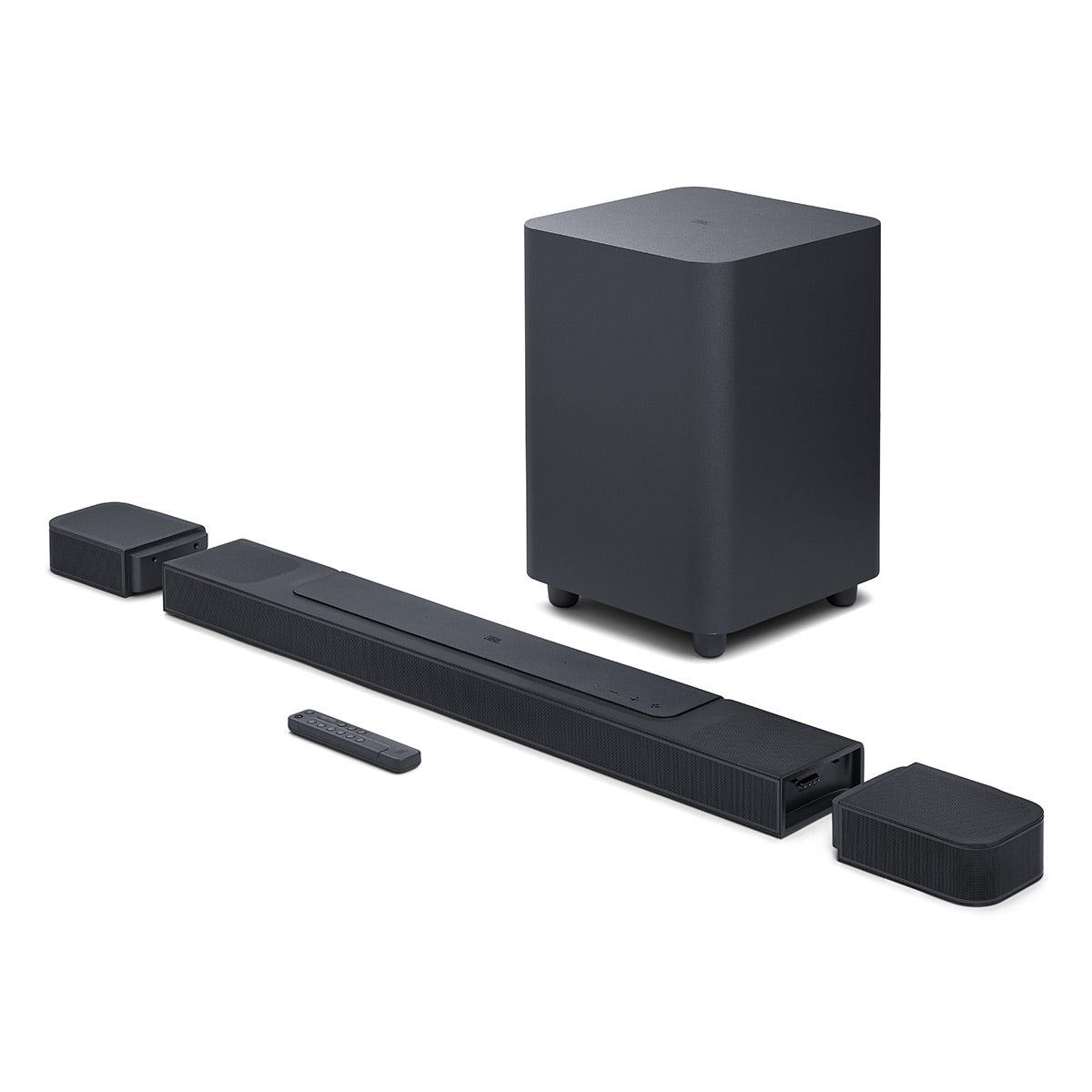
The JBL Bar 1000 takes a more traditional path with its 7.1.4 setup. Breaking that down:
Released around the same time as the Sony, JBL's approach focuses on dedicated speakers for each channel rather than virtual processing. The detachable rear speakers are particularly clever - they can be charged on the main unit and placed wherever needed for movie night.
Both systems handle dialogue well, but there are notable differences in how they create immersion:
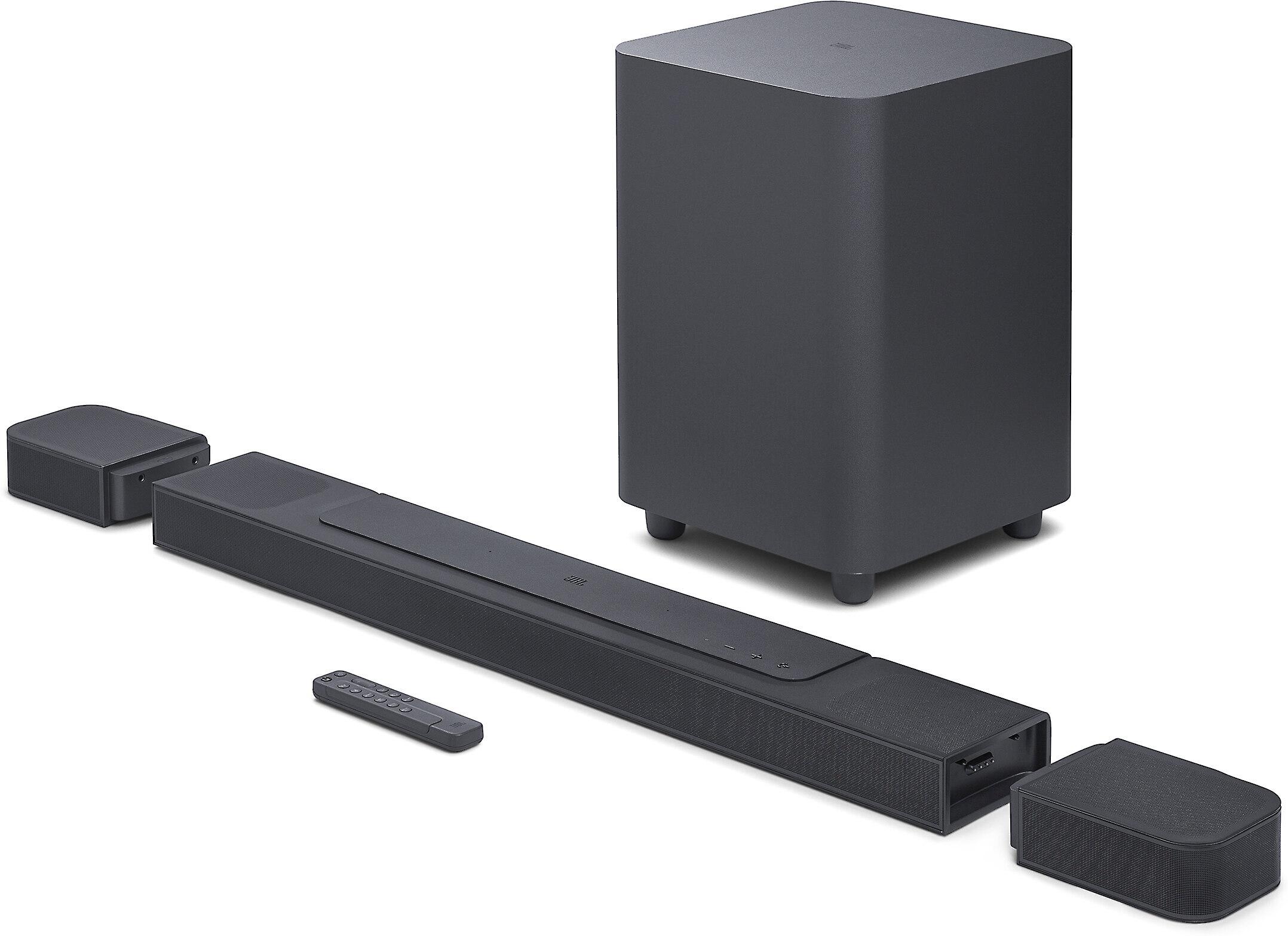
The Sony excels at:
The JBL distinguishes itself with:
The Sony's simplified approach makes it easier to live with day-to-day. There's just one unit to place, and its built-in subwoofers mean you don't need to find space for a separate bass unit. The trade-off is that bass impact and surround effects, while good, can't quite match a system with dedicated speakers.
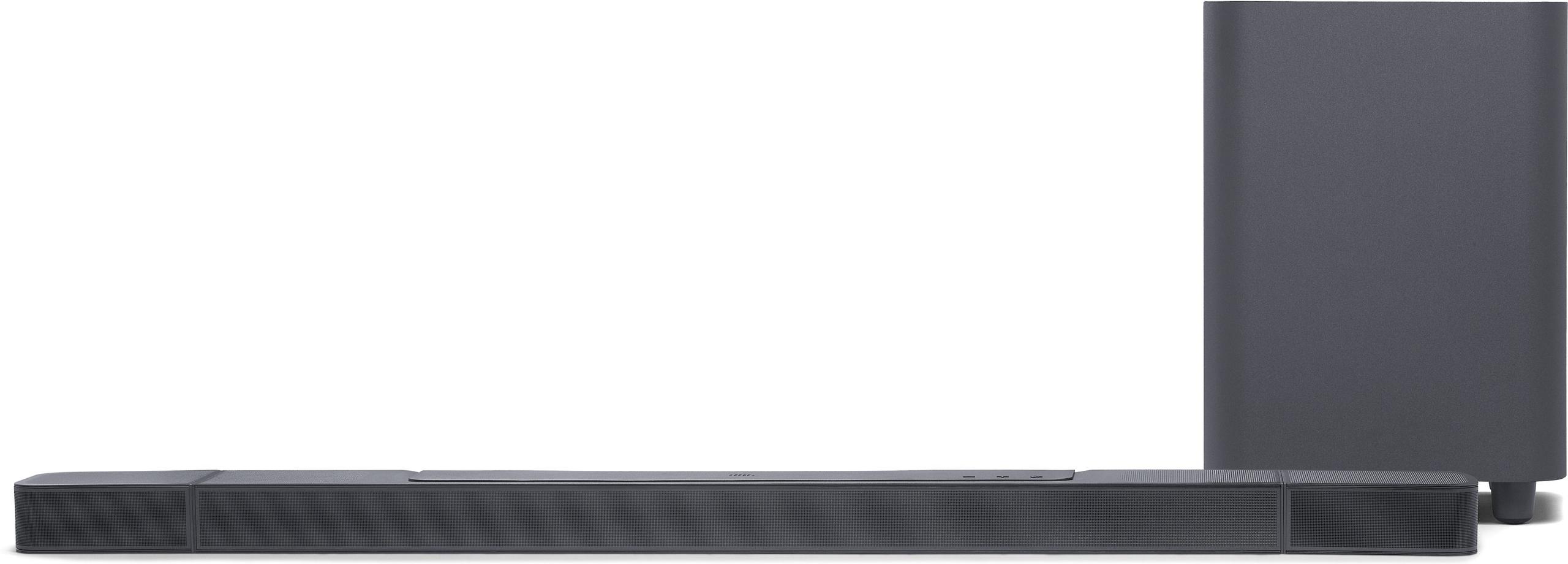
The JBL requires more setup consideration but rewards the effort. Those detachable rear speakers need occasional charging, but being able to place real speakers behind your seating position creates a more convincing surround experience. The separate subwoofer needs its own space but delivers noticeably deeper bass.
At $700, the Sony HT-A3000 offers an attractive entry point to Dolby Atmos sound. It's particularly compelling because you can add rear speakers and a subwoofer later if you want to expand the system. This flexibility lets you spread the cost over time while still enjoying improved sound immediately.
The JBL Bar 1000 costs considerably more at $1,140, but includes everything needed for a full surround sound experience. While the higher initial investment might give pause, you're getting a complete system that doesn't need additional purchases to reach its full potential.
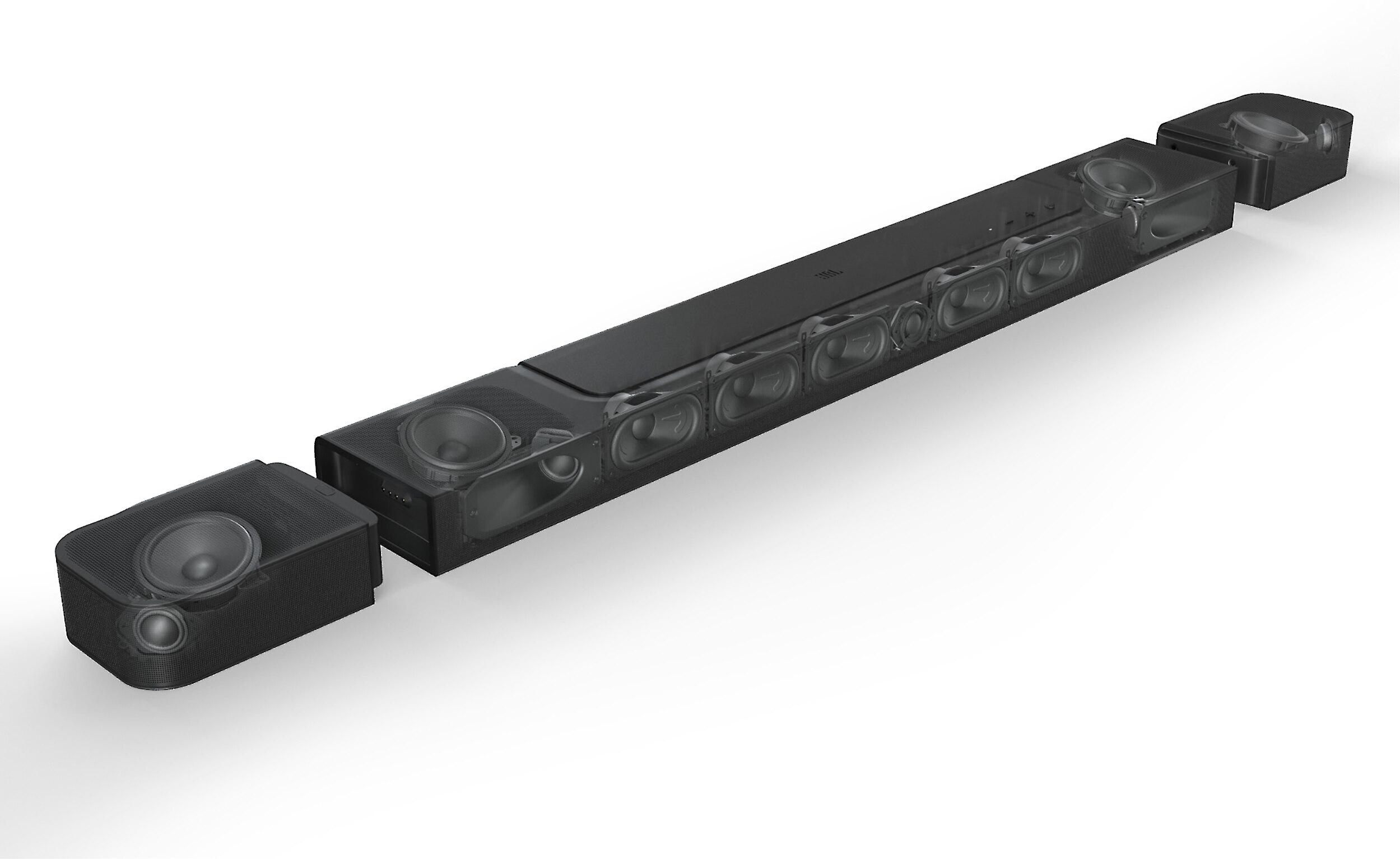
For dedicated home theater use, room size becomes a crucial factor. In smaller rooms (under 200 square feet), the Sony's virtual processing can be surprisingly effective - the close walls actually help create convincing surround effects. The compact form factor also works well in these spaces.
Larger rooms benefit more from the JBL's physical speaker approach. Virtual surround effects become less convincing as room size increases, while properly placed physical speakers maintain their impact. The separate subwoofer also helps fill larger spaces with bass more effectively.
Consider these key factors when deciding:
Both systems represent significant improvements over TV speakers and older soundbars. The Sony HT-A3000 offers an impressive virtual surround experience with minimal complexity, while the JBL Bar 1000 delivers a more traditional but more immersive surround sound experience.
For most users in typical living rooms, the Sony HT-A3000 provides excellent value and performance with room to grow. However, if you're setting up a dedicated home theater space and want the most immersive experience possible, the JBL Bar 1000 delivers a more complete solution that will better serve your needs.
Remember that both systems support modern features like WiFi streaming, voice assistant compatibility, and easy TV integration through HDMI eARC. The core decision really comes down to whether you prefer Sony's elegant simplicity or JBL's more traditional but comprehensive approach to surround sound.
| Sony HT-A3000 ($700) | JBL Bar 1000 ($1,140) |
|---|---|
| Channel Configuration - Determines how sound is distributed around your room | |
| 3.1 virtual channels | 7.1.4 physical channels with detachable rears |
| Total Power Output - Impacts maximum volume and sound clarity at high levels | |
| 250W total | 880W total |
| Subwoofer Configuration - Critical for bass impact and movie effects | |
| Built-in dual subwoofers | Separate 10" wireless subwoofer |
| Height Channels - Key for Dolby Atmos overhead effects | |
| Virtual processing only | 4 dedicated up-firing speakers |
| Room Size Suitability - Affects performance in your space | |
| Best for rooms under 200 sq ft | Ideal for larger rooms up to 400 sq ft |
| Setup Complexity - Consider your tolerance for optimization | |
| Simple single-unit placement | Multiple speakers require positioning |
| Future Expandability - Important for long-term value | |
| Can add wireless sub and surrounds later | Complete system, no expansion needed |
| Additional Features - Quality of life improvements | |
| Sound Field Optimization, DSEE Extreme | PureVoice, MultiBeam, detachable battery-powered rears |
| Primary Value Proposition - What you're paying for | |
| Compact, sophisticated virtual processing | True physical surround with no compromises |
The JBL Bar 1000 provides better movie performance with its dedicated surround speakers and 10" subwoofer. While the Sony HT-A3000 offers good virtual surround, physical speakers deliver more immersive movie experiences, especially in home theater settings.
For dedicated home theater use, yes. The JBL Bar 1000 at $1,140 includes everything needed for true surround sound, while the Sony HT-A3000 at $700 requires additional purchases to match the JBL's capabilities.
The Sony HT-A3000 is ideal for smaller spaces under 200 square feet. Its virtual processing works well in compact rooms, and the single-unit design saves space compared to the JBL Bar 1000's multiple speakers.
The JBL Bar 1000 delivers more convincing Dolby Atmos effects with four dedicated up-firing speakers. The Sony HT-A3000 creates virtual height effects that are good but can't match physical speakers.
The Sony HT-A3000 offers simpler setup with its single-unit design. The JBL Bar 1000 requires more setup time to position multiple speakers but rewards the effort with better surround performance.
The JBL Bar 1000 includes a powerful 10" wireless subwoofer. The Sony HT-A3000 has built-in subwoofers that provide good bass, but you can add an optional wireless subwoofer for more impact.
Both support major streaming services, but the Sony HT-A3000 offers better music processing with DSEE Extreme upscaling. The JBL Bar 1000 provides fuller sound with its separate subwoofer.
The JBL Bar 1000 performs better in open spaces due to its physical speakers. The Sony HT-A3000's virtual surround effects are less effective in open floor plans.
Yes, both the Sony HT-A3000 and JBL Bar 1000 support major voice assistants and offer smart home integration through their respective apps.
The JBL Bar 1000 offers better gaming immersion with its physical surround speakers. The Sony HT-A3000 provides good virtual effects but can't match the directional accuracy of physical speakers.
The Sony HT-A3000 can be expanded with optional rear speakers and a subwoofer. The JBL Bar 1000 is a complete system with no expansion options needed.
Both perform well, but the Sony HT-A3000 excels at dialogue clarity through its dedicated center channel and voice enhancement technology. The JBL Bar 1000 offers similar clarity plus additional surround immersion.
We've done our best to create useful and informative comparisons to help you decide what product to buy. Our research uses advanced automated methods to create this comparison and perfection is not possible - please contact us for corrections or questions. These are the sites we've researched in the creation of this article: rtings.com - electronics.sony.com - crutchfield.com - store.sony.com.au - digitaltrends.com - videoandaudiocenter.com - abt.com - sony.com - merlinstv.com - crutchfield.com - youtube.com - zdnet.com - jbl.com - jbl.com - pcrichard.com - rtings.com - d21buns5ku92am.cloudfront.net - ro.harmanaudio.com - target.com - harmanaudio.com - dell.com - mm.jbl.com - dolby.com - jbl.com.my - videoandaudiocenter.com